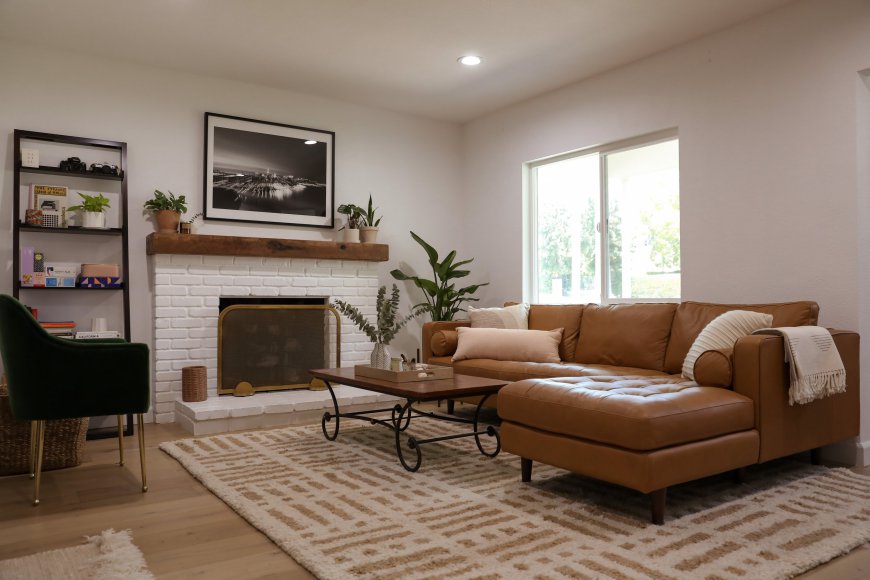Living Room Furniture: Creating a Cozy and Stylish Space

Living room furniture is essential in transforming your living space into a comfortable and inviting area for relaxation and socialization. As the heart of the home, the living room serves various purposes, from entertaining guests to enjoying family time. This article explores the different types of living room furniture, design considerations, and tips for creating an appealing and functional space.
Types of Living Room Furniture
1. Sofas and Couches
The sofa is often the focal point of any living room. When selecting a sofa, consider the following styles:
- Sectional Sofas: Ideal for larger spaces, sectionals provide ample seating and can be configured in various ways.
- Chesterfield Sofas: Known for their classic design and tufted upholstery, these sofas add a touch of elegance.
- Sleeper Sofas: A practical choice for smaller homes, sleeper sofas can double as a bed for overnight guests.
2. Chairs
Adding additional seating with chairs enhances comfort and style. Options include:
- Accent Chairs: These chairs can introduce color or texture and complement the overall design theme.
- Recliners: Perfect for relaxation, recliners provide adjustable seating positions for maximum comfort.
- Ottomans: Versatile and functional, ottomans can serve as footrests, extra seating, or even coffee tables when paired with a tray.
3. Coffee Tables
A coffee table serves as a functional centerpiece in the living room. Consider the following styles:
- Traditional Coffee Tables: Often made of wood, these tables can feature intricate designs and finishes.
- Glass Coffee Tables: Providing an airy feel, glass tables can make a space appear larger and brighter.
- Storage Coffee Tables: Ideal for smaller living rooms, these tables come with built-in storage options to keep clutter at bay.
4. Entertainment Centers
An entertainment center or media console is crucial for organizing electronics and enhancing the aesthetic of the living room. Options range from sleek modern designs to rustic wooden units, allowing you to choose one that fits your decor.
5. Shelving Units and Bookcases
Shelving units and bookcases add both functionality and style to your living room. They provide storage for books, decorative items, and personal memorabilia, helping to create a personalized and inviting atmosphere.
Design Considerations for Living Room Furniture
1. Space and Layout
Before purchasing furniture, measure your living space to ensure everything fits comfortably. Consider the flow of movement and avoid overcrowding the area, allowing for easy access to seating and other features.
2. Color Palette
Choose a color scheme that complements your overall home decor. Whether you prefer neutral tones for a calming effect or bold colors for a vibrant look, the right palette can enhance the beauty of your living room.
3. Style Consistency
Ensure that your furniture aligns with the overall style of your home. Whether it's modern, traditional, or eclectic, consistency in design will create a harmonious living space.
4. Comfort vs. Aesthetics
While style is important, comfort should never be compromised. Opt for furniture that feels good to sit on and aligns with your lifestyle, especially if you spend a lot of time in the living room.
Tips for Arranging Living Room Furniture
1. Create a Focal Point
Establish a focal point in the room, such as a fireplace, television, or artwork. Arrange furniture around this central feature to draw attention and create a cohesive look.
2. Use Area Rugs
Area rugs can help define the space and add warmth. Choose a rug that complements your furniture and provides a comfortable surface underfoot.
3. Vary Heights
Incorporate a mix of heights in your furniture arrangement. Use tall bookshelves alongside low coffee tables or ottomans to create visual interest and balance.
4. Leave Space for Movement
Ensure there is enough space between pieces to facilitate movement. A general rule of thumb is to leave at least 18 inches between the coffee table and seating.
Maintaining Your Living Room Furniture
1. Regular Cleaning
Dust and clean your living room furniture regularly to maintain its appearance. Use appropriate cleaning products for each material to avoid damage.
2. Protect Surfaces
Use coasters and placemats to protect surfaces from scratches and heat. Regularly inspect for signs of wear and address any issues promptly to prolong the life of your furniture.
3. Reupholstering and Refinishing
Consider reupholstering or refinishing furniture as needed. This can breathe new life into older pieces and keep your living room looking fresh and updated.
Conclusion
Choosing the right living room furniture is essential for creating a space that is both stylish and functional. By considering the types of furniture, design elements, and maintenance practices, you can design a living area that reflects your personal style and meets your needs. With thoughtful selection and arrangement, your living room can become a cherished space for relaxation and connection with loved ones.
